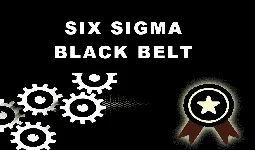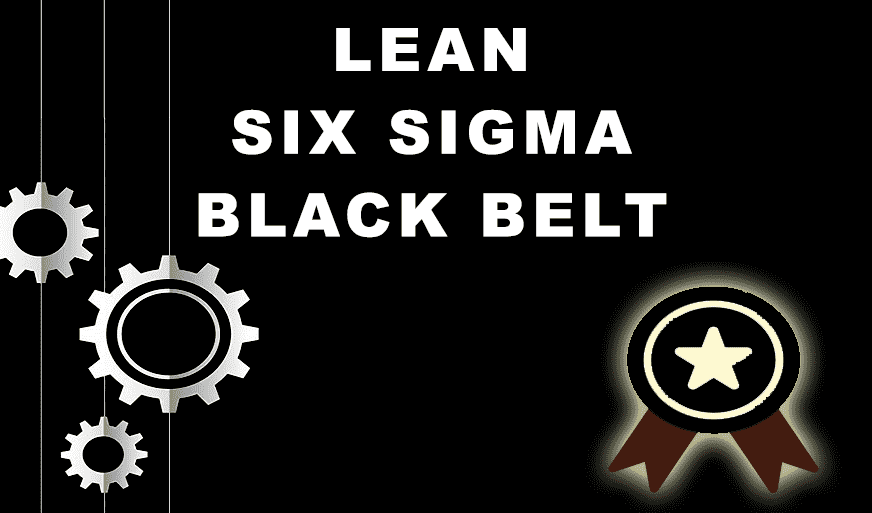Lean Continuous Improvement Methods for Business Excellence
-
 By Sushmith
By Sushmith - Published on Nov 21 2023

Table of Contents
- The Hidden Power of LCI Methods
- Exploring Key Lean Continuous Improvement Methods
- Lean Methods for Continuous Enhancement: Implementation Strategies
- Long-Term Excellence with Lean Continuous Improvement Methods
- Lean Continuous Improvement Evaluation: Metrics that Matter
- Strategies for Overcoming Lean Continuous Improvement Hurdles
- Real-World LCI Successes: A Business Case Study
- Sprintzeal's Lean Training to Elevate Your Expertise
- FAQs
- Summary
The Hidden Power of LCI Methods
In this modern world of Lean Management, technology, advancements, efficiency, and innovation reign supreme. Organizations are constantly seeking ways to optimize their operations to deliver exceptional value to their customers.
Amidst this relentless pursuit of excellence, Lean Continuous Improvement (LCI) methods have emerged as a beacon of transformative power. These methodologies provide a structured approach to identifying and eliminating waste, streamlining processes, and enhancing overall performance.
LCI methods are not mere theoretical concepts; they are practical tools that have been successfully implemented across diverse industries, driving tangible results that have propelled businesses to new heights. By embracing LCI, organizations can:
- Enhance customer satisfaction by delivering products and services that consistently exceed expectations.
- Reduce waste and eliminate non-value-adding activities, leading to cost savings and improved resource utilization.
- Streamline processes, eliminating bottlenecks and delays, resulting in faster lead times and increased productivity.
- Foster a culture of innovation and continuous learning, empowering employees to contribute to the organization's success.
The benefits of LCI extend beyond operational efficiency; they permeate the very fabric of an organization, creating a culture of collaboration, engagement, and continuous improvement. As organizations embrace LCI principles, they cultivate a mindset of innovation and adaptability, empowering them to thrive in the face of ever-changing market dynamics.
Exploring Key Lean Continuous Improvement Methods
Lean Continuous Improvement (LCI) methodologies have revolutionized the way organizations approach process improvement and operational excellence. LCI encompasses a diverse array of tools and techniques, each serving a unique purpose in the pursuit of operational excellence.

Let’s explore some of the key LCI methods that have proven to be advantageous in transforming organizations across industries:
Value Stream Mapping (VSM): Visualizing the Flow of Value
VSM is a powerful tool for visualizing the entire value stream of a process, from the raw materials entering the system to the final product reaching the customer. By mapping out each step of the process, VSM helps to identify non-value-adding activities, bottlenecks, and areas for waste reduction.
5S: Creating a Culture of Organization and Efficiency
5S, an acronym for Sort (Seiri), Set in Order (Seiton), Shine (Seiso), Standardize (Seiketsu), and Sustain (Shitsuke), is a housekeeping methodology that promotes organization, cleanliness, standardization, and discipline in the workplace.
By implementing 5S principles, organizations can reduce wasted time and effort, improve safety, and foster a more efficient work environment.
Kaizen: Embracing Continuous Improvement
Kaizen, a Japanese philosophy, advocates for continuous improvement through small, incremental changes. This approach, in contrast to large-scale overhauls, encourages constant learning and adaptation, enabling organizations to respond quickly to changing customer needs and market conditions.
Kanban: Managing the Flow of Work
Kanban is a visual production management system that controls the flow of work, preventing bottlenecks and ensuring that work is done in the right sequence at the right time. By limiting the amount of work in progress, Kanban reduces waste, improves lead times, and enhances overall productivity.
Poka-Yoke (Mistake-Proofing): Preventing Errors at Their Source
Poka-Yoke focuses on designing processes and systems that make it difficult or impossible for mistakes to occur. By eliminating errors at their source, Poka-Yoke reduces rework, improves product quality, and enhances customer satisfaction.
PDCA Cycle (Plan-Do-Check-Act): A Structured Approach to Improvement
The PDCA cycle provides a structured framework for implementing and evaluating LCI initiatives. It involves planning the improvement effort, implementing the change, checking the results, and acting on the findings to further refine the process.
Six Sigma: A Data-Driven Approach to Quality Improvement
Six Sigma is a data-driven methodology that aims to reduce defects and eliminate waste by minimizing process variation. Six Sigma tools and techniques can be integrated with LCI methods to provide a comprehensive approach to process improvement.
These key LCI methods, when applied effectively, can transform organizations into agile and adaptable entities, capable of continuously improving their processes, products, and services. By embracing LCI principles, organizations can achieve significant benefits, including:
- Reduced waste and costs
- Improved quality and customer satisfaction
- Increased productivity and efficiency
- Enhanced employee engagement and empowerment
- A culture of continuous learning and adaptation
Lean Methods for Continuous Enhancement: Implementation Strategies
Now that we've uncovered the core principles and key methodologies of Lean Continuous Improvement (LCI) in the previous sections, it's time to understand the domain of implementation. Let’s explore the strategies that organizations integrate Lean methods for continuous enhancement.

Crafting a Roadmap: Lean Implementation Strategies
Implementing Lean methods requires a well-thought-out roadmap. We'll delve into the essential steps organizations need to take to initiate and sustain the Lean journey successfully. From gaining leadership buy-in to creating a culture that embraces change, these strategies lay the foundation for a smooth and effective implementation process.
People-Centric Lean: Engaging Teams in the Continuous Improvement Culture
Lean is not just a set of tools; it's a cultural shift. We'll explore how organizations can foster a people-centric Lean approach, engaging teams at all levels. By empowering employees to contribute to the improvement process, businesses can tap into a wealth of collective knowledge, making continuous enhancement a collaborative and inclusive effort.
Technology as an Enabler: Integrating Lean Methodologies with Modern Tools
In the digital age, technology plays a crucial role in process optimization. We'll examine how organizations can leverage modern tools and technologies to enhance the impact of Lean methods. From data analytics to automation, technology serves as an enabler, providing organizations with the insights and efficiency required to propel their Lean initiatives forward.
Kaizen Events: Accelerating Improvement through Focused Workshops
Kaizen events, or rapid improvement workshops, are a cornerstone of Lean implementation. We'll explore how organizations can use these focused events to address specific challenges, generate quick wins, and build momentum for broader Lean initiatives. By harnessing the collective expertise of cross-functional teams, Kaizen events become catalysts for continuous improvement.
Lean Training for Expertise Elevation
Knowledge is the key to successful Lean implementation. We'll shine a light on the importance of Lean training, with a particular focus on Sprintzeal's comprehensive programs. These training initiatives are designed to equip individuals and teams with the knowledge and skills needed to navigate the complexities of Lean methods, ensuring expertise elevation at every level of the organization.
Continuous Learning: Evolving with Lean
The journey doesn't end with implementation; it evolves with continuous learning. We'll explore the concept of Gemba walks, where leaders immerse themselves in the actual work environment to gain insights and foster a culture of ongoing improvement. By emphasizing continuous learning, organizations stay agile and adaptable in the face of evolving challenges.
`
Long-Term Excellence with Lean Continuous Improvement Methods
As we venture deeper into the Lean Continuous Improvement (LCI) methods, our focus shifts towards the overarching goal: achieving long-term excellence. Organizations can sustain the momentum generated by Lean implementation, ensuring that the benefits endure and contribute to lasting success.
Cultivating a Culture of Continuous Improvement
At the heart of long-term excellence with Lean Continuous Improvement Methods lies a cultural transformation. Organizations can cultivate a continuous improvement culture, where every team member is not just part of the process but actively engaged in identifying opportunities for enhancement.
Building Resilience through Lean Methodologies
In this dynamic business landscape challenges are inevitable. Lean methodologies are robust frameworks, allowing organizations to navigate disruptions, adapt to change, and thrive in the face of uncertainty. From supply chain disruptions to market fluctuations, Lean principles provide a strategic advantage.
Lean Beyond the Production Floor: Extending the Impact
While Lean principles originated on the production floor, their applicability extends far beyond manufacturing. Organizations in diverse sectors, from healthcare to service industries, can adapt and tailor Lean Continuous Improvement Methods to suit their unique challenges.
Sustainability as a Key Metric
For a long-term excellence, sustainability becomes a key. Lean methods contribute to sustainable practices, minimizing environmental impact and aligning with the growing global focus on corporate responsibility. From waste reduction to energy efficiency, Lean principles align with sustainable business practices.
Evolving Metrics: Adapting to Changing Organizational Goals
Organizational goals evolve over time, and so should the metrics used to measure success. Organizations can adapt and evolve their metrics in alignment with changing objectives. By continuously assessing and refining performance indicators, businesses ensure that Lean Continuous Improvement Methods remain aligned with their strategic vision.
Lean Continuous Improvement Evaluation: Metrics that Matter
It’s crucial to understand how to measure success in Lean Continuous Improvement (LCI) methods. The metrics provides organizations with a comprehensive toolkit to evaluate the impact of their Lean initiatives and ensure continuous improvement.
Cycle Time Reduction: Speeding Up Processes
One of the fundamental metrics in Lean evaluation is cycle time reduction. Organizations can measure and optimize the time it takes to complete a process. By minimizing delays and enhancing efficiency, cycle time reduction becomes a key indicator of the effectiveness of Lean Continuous Improvement Methods.
Defect Rates: Striving for Perfection
Organizations aim to minimize defects in their processes. Lean methodologies, coupled with Six Sigma principles, contribute to lowering defect rates. Achieving a defect-free process is not just a goal; it's a testament to the success of Lean Continuous Improvement.
Employee Engagement: The Human Element
Engaged employees are a driving force behind successful Lean implementation. Measure and evaluate employee engagement in the context of continuous improvement. By creating a workplace culture that values and supports the contributions of every team member, organizations ensure sustained commitment to Lean principles.
Customer Satisfaction: A True Measure of Value
At the core of Lean philosophy is the creation of value for customers. Organizations can gauge customer satisfaction as a direct result of Lean improvements. By aligning processes with customer needs and expectations, businesses not only enhance satisfaction but also foster long-term loyalty and trust.
Cost Savings: The Bottom Line Impact
Lean Continuous Improvement should translate into tangible cost savings. Organizations can measure the financial impact of their Lean initiatives. From reduced waste to optimized resource utilization, understanding the cost-saving metrics demonstrates the economic benefits of a Lean approach.
Process Efficiency Metrics: Balancing Quality and Productivity
Process efficiency is a delicate balance between maintaining high-quality standards and achieving optimal productivity. Organizations strike this balance, ensuring that Lean Continuous Improvement Methods result in processes that are not only efficient but also uphold the highest standards of quality.
Return on Investment (ROI): Assessing the Value
Every organizational initiative should be assessed in terms of its return on investment. By quantifying the benefits against the investment made, organizations can make informed decisions about the sustainability and scalability of their Lean initiatives.
Strategies for Overcoming Lean Continuous Improvement Hurdles
Implementing LCI Models can significantly enhance the effectiveness of Lean principles and provide successful organizational transformation.Top of Form Let’s explore common hurdles organizations may face during the implementation of Lean principles and provide practical strategies to overcome them.

Resistance to Change: Embracing a Culture Shift
Challenge: Employees, accustomed to existing workflows, may resist changes introduced by Lean initiatives.
Strategy: Foster a culture of open communication and involvement. Provide comprehensive training to help employees understand the benefits of Lean methodologies, emphasizing how these changes contribute to their professional growth and the organization's success. Encourage and reward innovative thinking.
Lack of Leadership Buy-In: Aligning Vision and Strategy
Challenge: If leadership is not fully committed to Lean principles, implementation efforts may lack direction and support.
Strategy: Secure leadership buy-in by clearly demonstrating the strategic value of Lean Continuous Improvement. Showcase successful case studies, quantify potential benefits, and align Lean goals with the overall organizational strategy. Leaders should actively participate in the process and communicate the importance of Lean to all levels of the organization.
Inadequate Training and Education: Empowering Teams
Challenge: Without proper training, teams may struggle to understand and apply Lean methodologies effectively.
Strategy: Prioritize comprehensive training programs at all organizational levels. Equip employees with the knowledge and skills needed to embrace Lean principles. Consider external training resources, like Sprintzeal's Lean Training, to ensure that the workforce is well-prepared for the implementation journey.
Difficulty in Sustaining Momentum: Creating a Continuous Improvement Culture
Challenge: Organizations may find it challenging to sustain the momentum of Lean initiatives over the long term.
Strategy: Establish mechanisms for continuous improvement, such as regular Kaizen events and Gemba walks. Encourage employees to continually identify and address inefficiencies. Recognize and reward contributions to the improvement process to maintain a sense of achievement and motivation.
Overemphasis on Tools, Underemphasis on Culture: Striking the Right Balance
Challenge: Overreliance on Lean tools without fostering a culture of continuous improvement can limit the long-term impact.
Strategy: Emphasize the importance of both tools and culture. While Lean tools are valuable for process optimization, cultivating a mindset of continuous improvement is equally crucial. Ensure that employees understand the philosophy behind the tools and view them as enablers rather than rigid procedures.
By addressing these common challenges head-on with strategic planning and a commitment to cultural change, organizations can pave the way for a successful Lean Continuous Improvement journey.
Real-World LCI Successes: A Business Case Study
Toyota's Production System
Background: Toyota, a global automotive giant, is renowned for pioneering the Toyota Production System (TPS), a paradigmatic example of Lean principles in action. The company faced challenges in the mid-20th century, including limited resources and a need for efficient production to compete with larger automakers.
Lean Implementation: Toyota's journey towards Lean excellence began with the implementation of the TPS, a comprehensive set of LCI methods. Key elements of TPS include:
- Just-In-Time (JIT) Manufacturing: Reducing inventory levels to the bare minimum, ensuring products are produced precisely when needed.
- Continuous Flow Production: Eliminating bottlenecks and optimizing the flow of work to enhance efficiency.
- Kaizen Philosophy: Embracing a culture of continuous improvement, where employees at all levels are encouraged to suggest and implement small, incremental changes.
- Jidoka (Autonomation): Introducing automation with a human touch, empowering workers to stop the production line in case of defects.
Results: The application of Lean principles at Toyota resulted in profound and sustained success:
- Efficiency Gains
- Quality Improvement
- Cost Reduction
- Flexibility and Adaptability
Long-Term Impact
Decades after its inception, the Toyota Production System remains a cornerstone of the company's success. Toyota's commitment to continuous improvement and Lean principles has not only sustained its position as a global leader in the automotive industry but also influenced practices across various sectors worldwide.
Key Takeaways
The case of Toyota's Production System serves as a testament to the enduring impact of Lean Continuous Improvement Methods. By prioritizing efficiency, quality, and a culture of continuous improvement, Toyota has set a standard for Lean implementation that continues to inspire businesses globally.
This real-world example highlights how Lean principles can transform not just individual processes but entire organizational cultures, leading to sustained excellence over the long term.
Sprintzeal's Lean Training to Elevate Your Expertise
It’s crucial to recognize the significance of comprehensive training to navigate the world of Lean Continuous Improvement (LCI). This is where Sprintzeal steps in, offering a dynamic platform designed to elevate your expertise in Lean methodologies.
Why Choose Sprintzeal's Lean Training?
- Comprehensive Curriculum Aligned with Industry Standards
- Expert Instructors with Real-World Experience
- Interactive and Engaging Learning Environment
- Flexible Learning Options to Suit Your Schedule
Unlock Your Potential with Sprintzeal's Lean Training
By investing in Sprintzeal's Lean Training, you're not just acquiring a certification; you're unlocking a pathway to excellence. Here's how our courses can empower you on your Lean journey:
- Career Advancement Opportunities
- Immediate Application of Knowledge
- Networking Opportunities
Take the Next Step in Your Lean Journey
Ready to start your journey of continuous improvement and business excellence?
Let Sprintzeal be your training partner, and explore our Lean Training courses to unlock the full potential of your Lean journey.
FAQs
What are the 3 methods of lean production?
In the realm of Lean production, three foundational methods form the backbone of efficiency:
- Just-In-Time (JIT): A method that focuses on producing items at the exact time they are needed in the production process.
- Jidoka (Autonomation): This method empowers machines to automatically stop when a defect is detected.
- Kaizen (Continuous Improvement): A philosophy centered on making incremental improvements to processes regularly.
What are the 5 Lean principles in Six Sigma?
In the marriage of Lean and Six Sigma, five key principles guide the way:
- Define: Clearly outline the problem or project goals.
- Measure: Establish metrics and collect data to quantify the problem.
- Analyze: Dig into the data to identify the root causes of the problem.
- Improve: Develop and implement solutions to address the root causes.
- Control: Establish controls and measures to sustain the improvement over time.
What are methods of continuous improvement?
Continuous improvement is a dynamic process, and various methods contribute to its success:
- Kaizen Events: Focused, short-term improvement projects that bring together cross-functional teams to solve specific challenges.
- Plan-Do-Check-Act (PDCA) Cycle: A systematic four-step management method used for continuous improvement of processes and products.
- Gemba Walks: Direct observation of work processes in their natural environment to identify opportunities for improvement.
What are the 4 stages of continuous improvement?
Continuous improvement unfolds in distinct stages:
- Assessment: Evaluate current processes and identify areas for improvement.
- Planning: Develop a detailed plan outlining the changes to be implemented.
- Implementation: Execute the planned changes.
- Monitoring: Continuously assess and monitor the implemented changes, iterating the cycle as needed.
What are the 5 lean principles of process improvement?
To streamline processes and eliminate waste, Lean principles are paramount:
- Value: Identify and deliver what truly matters to the customer.
- Value Stream: Map the end-to-end process to visualize and eliminate non-value-added steps.
- Flow: Ensure a smooth flow of work through the system, minimizing interruptions and delays.
- Pull: Establish a system where work is pulled only when there is demand, avoiding overproduction.
- Perfection: Strive for continuous improvement and excellence, recognizing that perfection is an ongoing journey.
Summary
In our exploration of Lean Continuous Improvement (LCI) methods, we've explored the core principles, methodologies, and real-world applications that define this transformative approach to process enhancement.
Real-world examples illuminated the tangible impact of Lean in organizations like Toyota, showcasing the enduring power of Lean methodologies.
Embracing Lean principles means embracing change, adopting innovation, and developing a collective dedication to continuous improvement. The tools and strategies shared in this blog serve as a roadmap, empowering professionals to navigate the complexities of modern businesses.
The door to continuous improvement is open, and Sprintzeal stands ready to guide you through it. Our courses are designed to cater to various skill levels, providing a flexible and interactive learning environment. Our commitment to delivering quality learning set as apart as a trusted training partner.
Relevant Certification Courses:
Lean Six Sigma Green Belt Certification
Lean Six Sigma Black Belt Certification
Explore our Quality Management Courses and empower yourself with the knowledge and skills needed for success in Lean Continuous Improvement. Elevate your career, drive organizational excellence, and become a catalyst for positive change.
Subscribe to Our Newsletter and receive latest insights, exclusive offers, and updates on training schedules to fuel your CI journey.
Subscribe to our Newsletters
Popular Programs
Trending Posts
Financial Analyst Interview Questions and Answers 2024
Last updated on Jan 13 2023
Learn about Statistical Process Control (SPC) and its top applications
Last updated on Mar 21 2023
A Comprehensive Guide to Quality Management Systems
Last updated on Jun 21 2024
Step-by-Step Implementation Guide to ISO 9001
Last updated on Jul 11 2024
Six Sigma Certifications - Reasons Why you Should Get Them
Last updated on Aug 18 2022
Six Sigma Certification – Everything you Need to Know About Getting Certified
Last updated on Nov 8 2023
Categories
- Agile Management 54
- AI and Machine Learning 42
- Big Data 53
- Business Management 51
- Cloud Computing 44
- Digital Marketing 56
- Information Security 8
- IT Hardware and Networking 17
- IT Security 103
- IT Service Management 29
- Leadership and Management 1
- Microsoft Program 2
- Other 43
- Programming Language 31
- Project Management 162
- Quality Management 75
- Risk Management 8
- Workplace Skill Building 2
Trending Now
Top Career benefits of Lean Six Sigma Green Belt
ArticleLean methodology, Six Sigma methodology and Lean Six Sigma Explained
ArticleSix Sigma Black Belt Certification – Value and Career Benefits in 2024
ArticlePareto Chart in Six Sigma - Explained
ArticleQuality Management Interview Questions 2024
ArticleSix Sigma Certification Guide - A Professional's Guide
ArticleSix Sigma Yellow Belt Certification - Six Sigma for Beginners
ArticleQuality Control Explained – Six Sigma
ArticleTotal Quality Management - A Complete Guide for Beginners
ArticleQuality Assurance in Six Sigma Explained
ArticleQuality Assurance vs Quality Control
ArticleSix Sigma Certification – Everything you Need to Know About Getting Certified
ArticleLean Six Sigma on Resume for Rewarding Career Benefits
ArticleQuality Manager Interview Questions and Answers for 2025
ebookService Delivery Manager Interview Questions and Answers (With Examples)
ArticleSix Sigma Interview Questions and Answers 2024
ArticleHow to become a Quality Analyst
ArticleA Supply Chain Management Guide to Mastering Logistics End to End
ArticleSenior Quality Manager Interview Questions and Answers 2024
ArticleTop 30 Quality Analyst Interview Questions and Answers 2025
ArticleFinancial Analyst Interview Questions and Answers 2024
ArticleRisk Manager Interview Questions and Answers 2024
ArticleCompliance Manager Interview Questions and Answers 2024
ArticleOperation Manager Interview Questions and Answers
Article5 Lean Continuous Improvement Principles to Supercharge Your Operations
ArticleHow to Become a Quality Manager - Career, Job Scope and Certifications
ArticleEssential Components of a Quality Management System
ArticleSix Sigma Certifications - Reasons Why you Should Get Them
ArticleTop Qualities of a Good Manager and a Leader
ArticleLearn about Statistical Process Control (SPC) and its top applications
ArticleCost of Poor Quality - A Detailed Guide
ArticleImplementing 5S Methodology for Better Work Efficiency
ArticleWhat Is Lean Management?
ArticleBest Six Sigma Books in 2024
ArticleLeadership vs Management - The Ultimate Guide
ArticleQuality Assurance Plan - Six Steps To Quality Assurance Plan
ArticleOperational Planning Creation, Key Elements and its Benefits
ArticleA Complete Guide to Product Life Cycle Stages 2025
ArticleSix Sigma tools for DMAIC Phases
ArticleWhat Is Lean Manufacturing?- An Overview
ArticleThe Lean Continuous Improvement Model: A Comprehensive Guide
ArticleDMAIC vs. DMADV: Key Differences and Choosing the Right Six Sigma Methodology
ArticleA Deep Dive into the Power of Lean Continuous Improvement Process
ArticleIntroduction to Lean Manufacturing- Definitions, Framework, and More
ArticleUnderstanding the Key Principles of Lean Manufacturing
ArticleSecret to Unlock Organizational Excellence: Stages of Continuous Improvement
ArticleLean Continuous Improvement: A Detailed Guide to Mastering Organizational Quality
ArticleLean Waste Management: The Ultimate Guide 2023
ArticleA Deep Dive into Lean Continuous Improvement Tools
Article8 Wastes of Lean - Strategies for Identification and Elimination
ArticleThe Ultimate Guide to Lean Manufacturing
ArticleUnderstanding Lean Manufacturing's Pros and Cons
ArticleLean Waste Reduction Strategies: Boost Efficiency and Cut Costs
ArticleTop 10 Lean Manufacturing Tools for Optimal Productivity
ArticleBeyond the Basics: Benefits of Lean Continuous Improvement
ArticleWhat are Quality Standards? | A Guide to ISO Standards
Article7 Important Types of Quality Management System
ArticleA Comprehensive Guide to Quality Management Systems
ArticleISO 9001 Standard: Benefits and Certification
ArticleBenefits of QMS Certification for Your Business
ArticleStep-by-Step Implementation Guide to ISO 9001
ArticleThe Ultimate Guide to ISO 9001: Boosting Quality and Certification Success
ArticleQuality Management System – QSM Approaches and Methodologies
ArticleHow to Effectively Implement a Robust Quality Management System?
ArticleExplaining QMS Documentation Structure: Benefits and Best Practices
ArticleWho Needs ISO 9001 Certification and Why?
ArticleKey Elements of ISO 9001:2015 Quality Management System
ArticleOvercoming Common Challenges in ISO 9001 Certification: Tips and Best Practices
ArticleBest Quality Management Tools
ArticleTotal Quality Management (TQM) vs. Six Sigma
ArticleQuality Manager Salary: What Freshers & Experts Earn in 2025
ArticleCertified Scrum Product Owner: Job Roles And Responsibilities
ArticleTips for Continuous Integration Testing: Streamlining QA
Article10 Quality Management Strategies Adopted by Top Managers
Article

















